Are you a slave to STUFF? Getting organized may seem daunting, but by implementing a few simple strategies, you can learn how to live clutter free!
Do you ever feel like you’ve become a slave to STUFF? Acquiring it, organizing it, working to pay for it, and feeling it weigh us down–clutter can literally smother our lives.
And while logically most of us understand that more stuff won’t make us happier–and in fact might just make our lives more complicated–for many of us, our addiction to stuff an emotional attachment. We remember the joy a new pair of shoes or a new dress brought us, so we learn to associate shopping and purchasing with happiness. We continuously seek that high by bringing in more and more.
Some of us go through a loss of a loved one, a divorce, or other traumatic event and then associate the things left behind with happier memories. We feel scared to let go of items because we don’t want to feel the loss of those closest to us, or because we’re trying to hold onto happier memories and times.
For others among us, we’ve developed an attachment to stuff because perhaps we grew up not having enough. We know the fear of scarcity, so we attach a false sense of value to items when we acquire them.
Whatever our reasons for holding onto items, it can often be difficult to realize it’s time to let go. It means facing some internal, emotional and very tough stuff we may be avoiding.
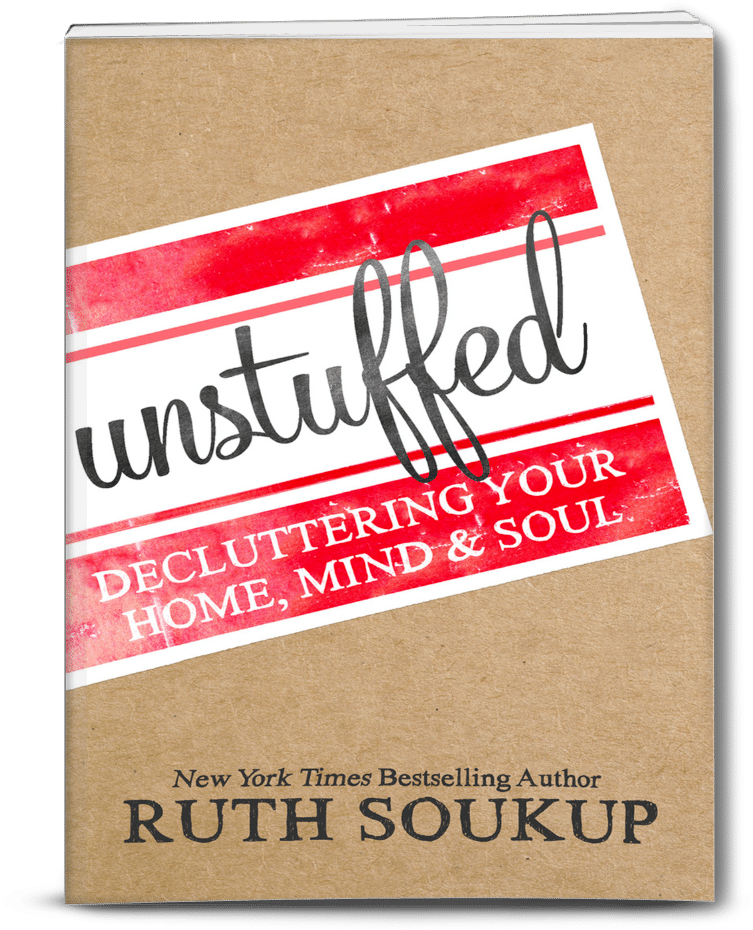 But the reality is that getting rid of clutter can help us feel freer. We no longer feel overwhelmed by the items in our home and buried by the insurmountable task of cleaning and organizing everything. We come to see the effects of too much stuff lessen in our children as they come to value experiences rather than items. We start to feel emotionally lightened, we begin to find our schedules more manageable, and our lives are just easier with less stuff to deal with.
But the reality is that getting rid of clutter can help us feel freer. We no longer feel overwhelmed by the items in our home and buried by the insurmountable task of cleaning and organizing everything. We come to see the effects of too much stuff lessen in our children as they come to value experiences rather than items. We start to feel emotionally lightened, we begin to find our schedules more manageable, and our lives are just easier with less stuff to deal with.
I will be the first to admit that it’s not an easy process, and to be perfectly honest, I’m still working on it myself! It really requires a certain diligence and a commitment to the “unstuffing” mentality. But once you have it, it really does get easier. I promise!
How to Ruthlessly Purge & Become Clutter F.R.E.E.
While my book Unstuffed: Decluttering Your Home, Mind & Soul digs much deeper into these concepts, here are the basic principles to remember, so you can begin to F.R.E.E. yourself from clutter and commit to an unstuffed life.
F: Fight to Stop the Flow
Stop clutter before it even makes it past the threshold of your home. When you’re out, avoid stopping at extra stores, don’t browse the back endcaps of aisles for “sale items,” and stick to your list. Consider a month of zero-spending to really get the mindset to stick.
When a birthday or special occasion is coming up, ask your guests and friends to consider giving a donation in your name to a favorite charity. Ask for experiences rather than gifts. Tell friends you’d love to schedule time to simply sit down one-on-one with some good coffee, or ask if they’d like to take a class with you. When it comes to your children, encourage relatives and friends to engage in an activity with your child, rather than giving a gift.
Several years ago, long before “The Great Toy Purge”, I remember looking around my kid’s room, and just feeling completely overwhelmed. It was strewn with Legos, doll clothes, Littlest Pet Shop animals, and all the accessories and “stuff” to go with them. Whenever we went to the store, my girls would tease and whine for more things to add to their collections—there was no joy or value in their belongings. Everything they had was simply “stuff” to be acquired, briefly played with, and then forgotten.
As much as I would like to believe it was just a kid thing, I too was guilty of acquiring and accumulating stuff simply to have it. The things we had were no longer needed or loved. They were just “there” because we wanted them in the moment.
Once we scaled back and cleaned out, we underwent an amazing transformation as a family. When we went to the store, we made it through entire trips with NO WHINING! My girls didn’t ask for a new toy to take home, but instead took joy in the moment. My husband and I were quickly on board as well.
It’s important to get your entire family on your side, so everyone is fighting the flow of stuff together. To avoid excess spending on items you and your family really don’t need, talk about the difference between needs and wants. Explain how, for most of us, our needs are already being met, every day, and explain the importance of gratitude and thankfulness. Think of new activities and experiences your family can engage in, rather than buying items. You can build a lot more memories together with a day at the amusement park or fair, by going out to a kid-friendly dinner, or by heading out to a movie as a group.
R: Reduce by Ruthlessly Purging
Go through your home and clear the clutter. Set up a weekend or a few days to dedicate yourself to the process. Go through every drawer, cupboard and closet, and be brutally honest with yourself about your needs. For each and every item in your house, ask yourself: Do I really use this? Does it work? Do I really like it and want it? If you haven’t used the item in a year, if it doesn’t bring you joy, or if it’s not useful, don’t keep it.
Remember: our memories are not tangible. We hold onto items because we attach feelings or meaning to them, when really the meaning is in our hearts and minds. If there’s something you don’t love, but you’re keeping it out of guilt or fear of letting go, think of a way to preserve the memory instead. This may mean taking a photo or writing down the memory. Then, give those items new life by donating or selling them to someone else who can enjoy them more fully.
Items can be donated to charity, sold to earn some extra cash, or given to friends and neighbors who might be able to give them a new home. Hold a garage sale or list items on neighborhood swap boards to find people who can put your stuff to use.
E: Establish Strict Limits
We live in a world where everything is bigger, better, faster and MORE. In reality, many of us have as much as we need (if not more). Set up strict limits based on your needs. Most of us don’t need more than three sets of sheets per bed, a set or two of dishes, and so on.
When it comes to clothing, set limits on what you have space for. (I recommend a 40-hanger closet.) Every time an item goes in, make a commitment that another item goes out. This mentality will keep you from purchasing items you don’t need (to store in space you don’t really have)!
Base your limits on what you need and use, and also on what items you really love. For example, if you have a set of special Christmas dishes, but they bring you great joy and you really use them over the holidays, it’s reasonable to keep them. However, having a set of dishes for every holiday (requiring storage, cleaning and constant rotation) is likely more effort than it’s worth. Whatever the items, set your limits and be realistic and reasonable.
Just like our children, we can get into the “collect all twelve” mentality, purchasing a nail polish in every shade, a blouse in several colors, or candles in different scents (especially if they’re on sale). If you don’t need it, just enjoy the single item on your list. I know this is something very hard for me personally. When I make an online purchase, a single item in my cart looks so empty—I start to think I should throw a few things in there to save on shipping. In reality, it’s just more things to add to the clutter. Buy only what you need!
E: Emphasize Quality Over Quantity
In our parents’ and grandparents’ days, handcrafted items were high quality. They were built to last and withstand the test of time. Clothing was made carefully, using quality stitching and attention to detail. Items often cost a greater percentage of their income (even though by today’s standards, they might seem much less expensive). When grandma bought a new coat or blouse, she expected it to last for several seasons.
Nowadays, clothing has become much cheaper and much more disposable. Not only is the human cost greater on these imports (with less-than optimal working conditions for factory workers), but the environmental impact and waste is felt around the globe. We live in a culture where low-quality shirts can be purchased for under $10 each, worn one or two times, then disposed of without another thought.
Part of fighting the flow means purchasing quality items made to last—and not just when it comes to clothing and furniture. Toys, office supplies, kitchen items and décor are often imported and made cheaply and unsustainably. When you purchase a new item for your home, give careful attention to the quality. Consider the usefulness of the item and examine it to see if it seems well crafted.
It can also mean getting those great shoes resoled or tailoring a pair of pants rather than letting them get all ripped up on the bottom. We’ve become accustomed to a “use it up and throw it away” mentality. Consider instead the long-term value in having a quality item repaired or adjusted so you can continue to use it.
Reupholster a piece of furniture that has great “bones,” or add a fresh coat of paint to a frame or a planter needing some sprucing up. When the items you purchase are made from quality materials and built to last, they can have a much longer life.
As you begin to free yourself from clutter, you’ll learn to become more discerning with all your purchases and to make do with what you have whenever you can. You’ll be amazed and surprised at the areas of your life you can declutter, leaving you more appreciative and freer to enjoy the things that really matter.
P.S. Unstuffed is now available in bookstores everywhere, and if you’ve been feeling weighed down by clutter, it might just be the message your heart needs to hear! Jam-packed with inspiring personal stories as well as practical tips you can implement right away, it is a guilt-free, stress-free guide to taking our life back from all the STUFF weighing down our lives.
To recap, here are the ways to Ruthlessly Purge & Become Clutter F.R.E.E:
- F: Fight to Stop the Flow
- R: Reduce by Ruthlessly Purging
- E: Establish Strict Limits
- E: Emphasize Quality Over Quantity
Other helpful resources:
PIN FOR LATER:
TAKE BACK CONTROL OF YOUR HOME LIFE
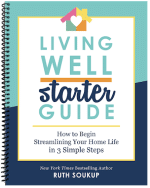 Ever feel like you just can't keep up? Our Living Well Starter Guide will show you how to start streamlining your life in just 3 simple steps. It's a game changer--get it free for a limited time!
Ever feel like you just can't keep up? Our Living Well Starter Guide will show you how to start streamlining your life in just 3 simple steps. It's a game changer--get it free for a limited time!
If you love this resource, be sure to check out our digital library of helpful tools and resources for cleaning faster, taking control of your budget, organizing your schedule, and getting food on the table easier than ever before.

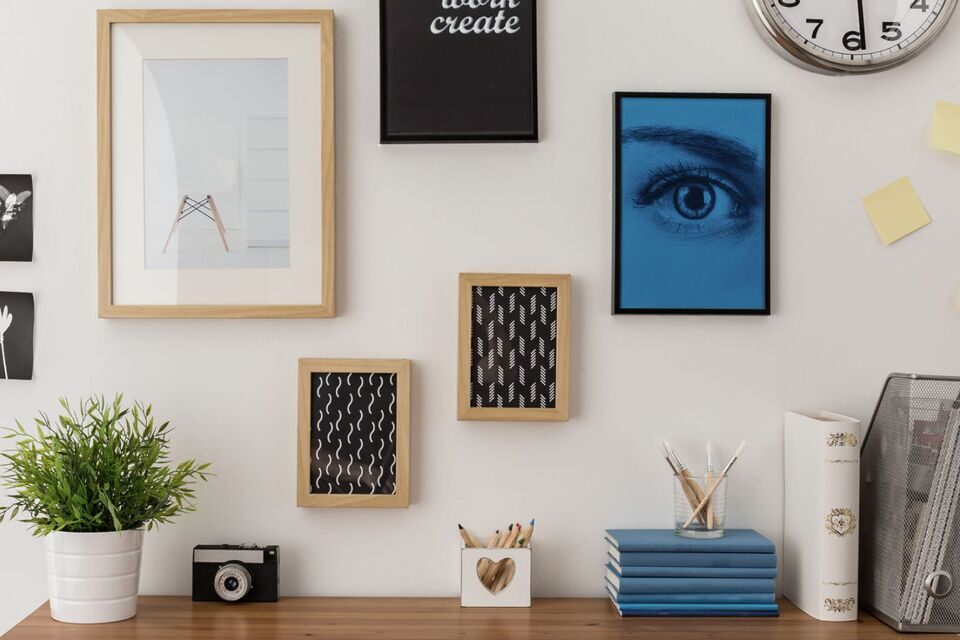
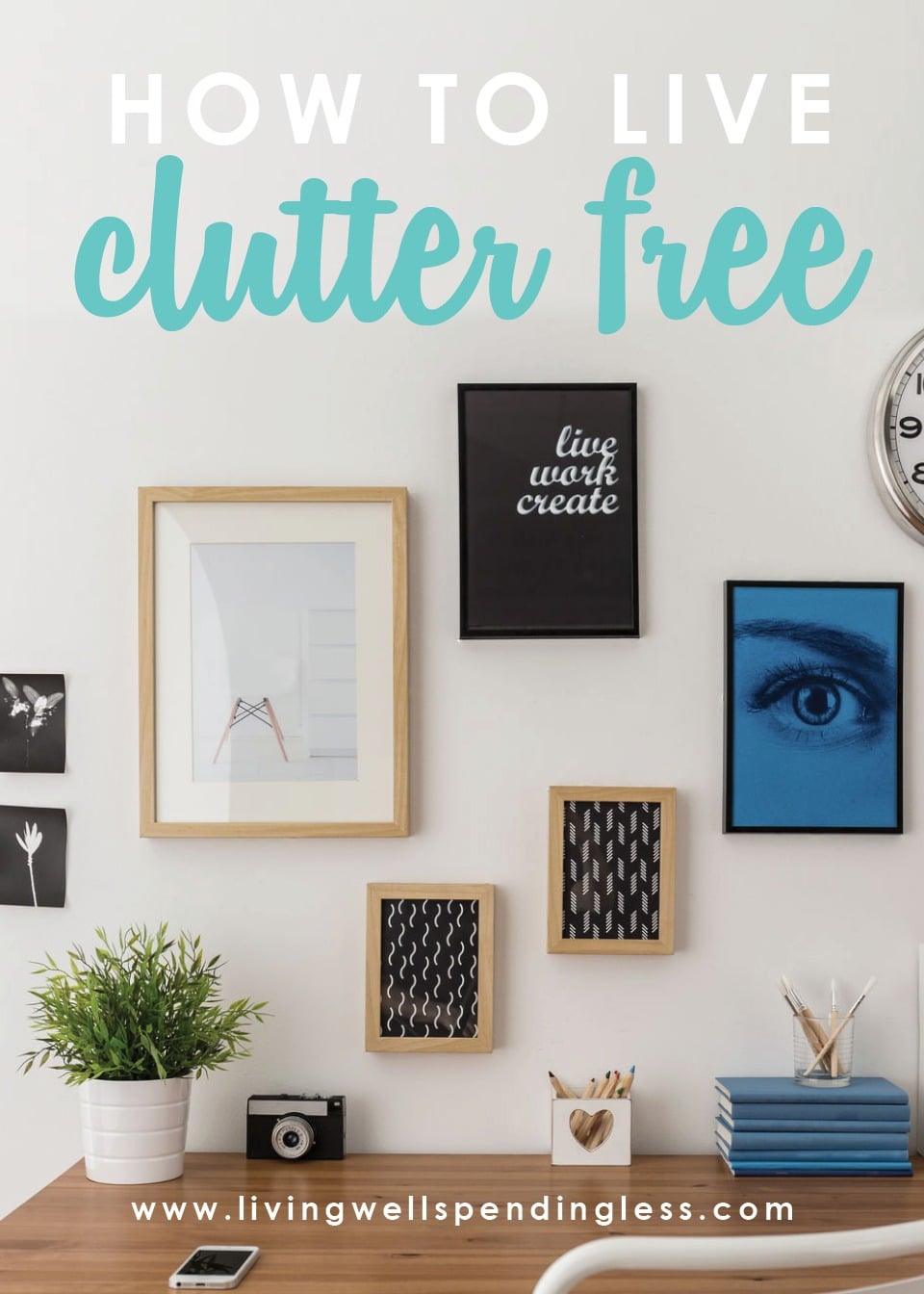
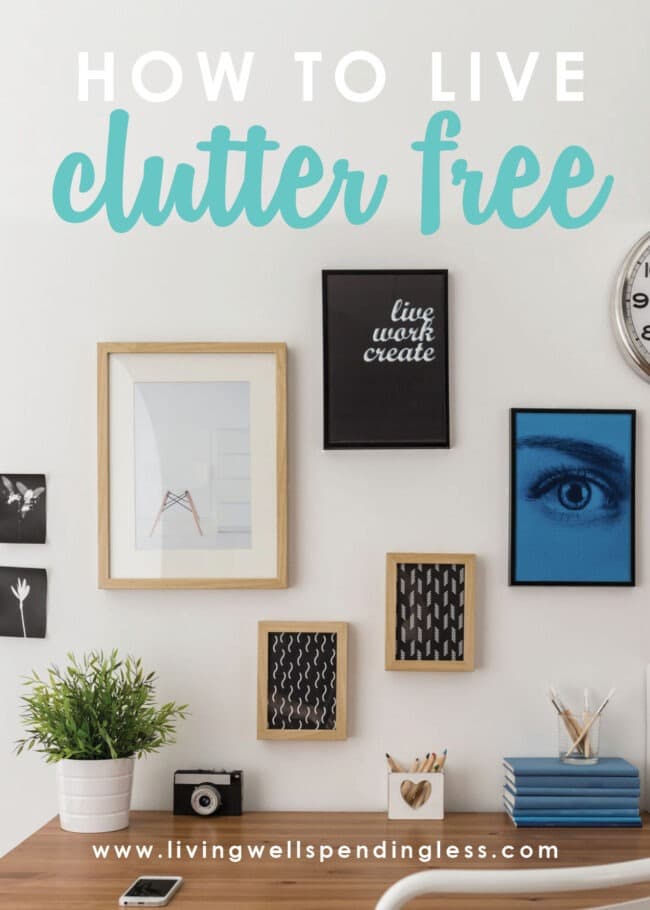
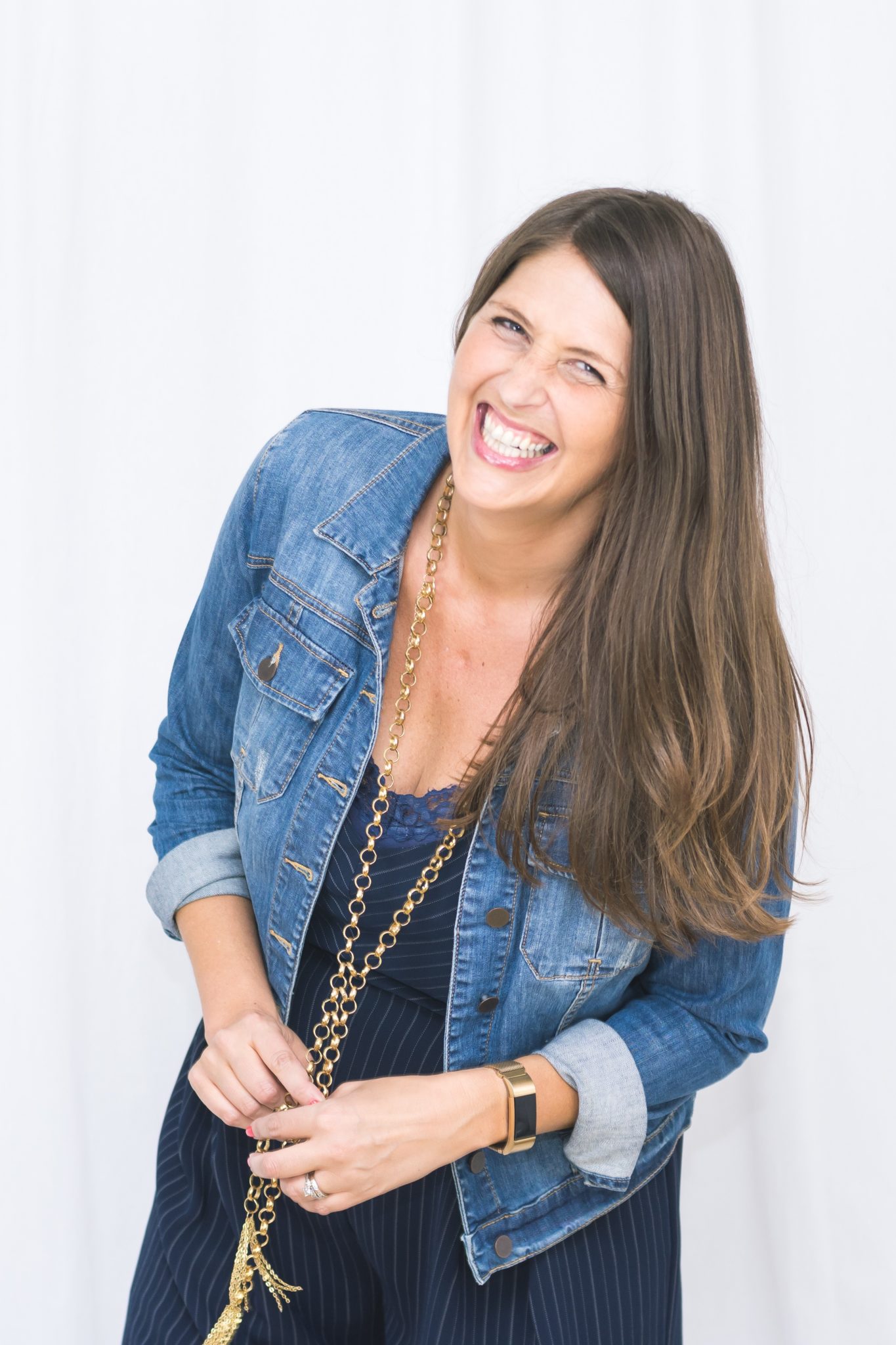


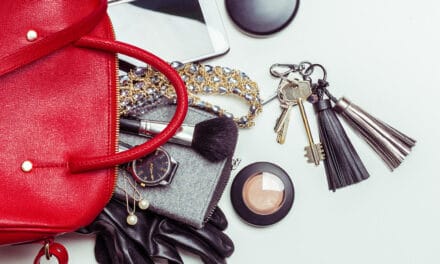


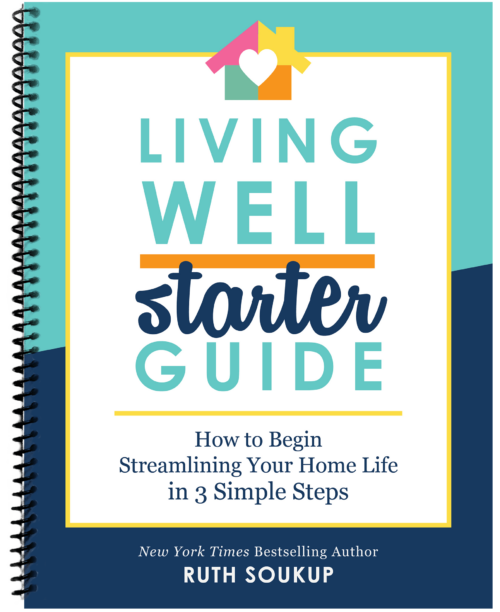

Collage a box or table with your favorite verses! Frame a favorite passage or hang reminders up where you’ll see them
With havin so much written content do you ever run into any issues
of plagorism or copyright violation? My website has a lot of completely unique content I’ve either created myself or outsourced but it seems a
lot of it is popping it up all over the internet without my authorization. Do you
know any methods to help protect against content from being stolen?
I’d certainly appreciate it.
I learned a lot from her because purging was a …
Does this book offer spiritual advice or reference the Bible heavily? Or is it strictly how to clutter your home. If there are things of a religious nature, could you send me an excerpt? Thank you
There are Bible verses in the book. You can read more about Unstuffed here: http://unstuffed.com/
The Purging! That’s the step I struggle with the most! “But what if I need it again some day?” I don’t think I really need that many bread twist ties. haha Seriously though, we have no room for extra things. I keep saying I’ll have a yard sale but that has yet to happen. :o/